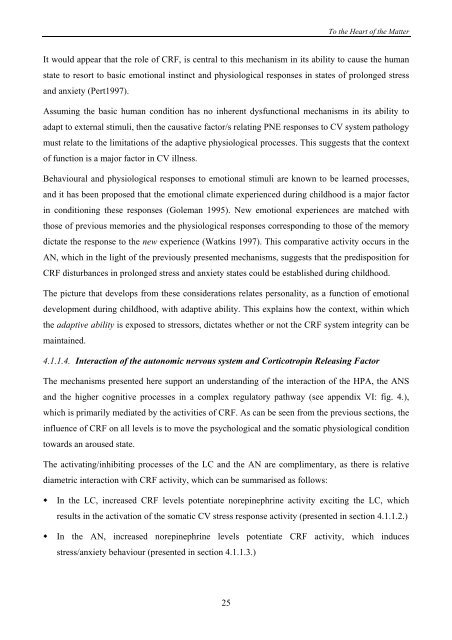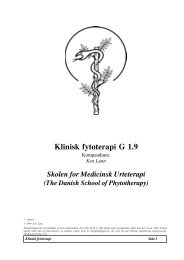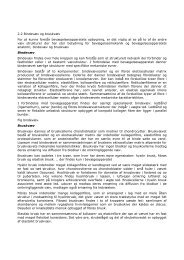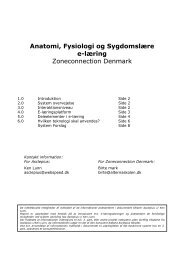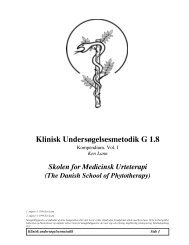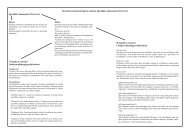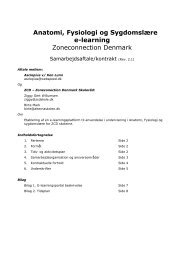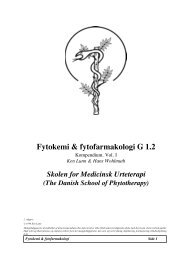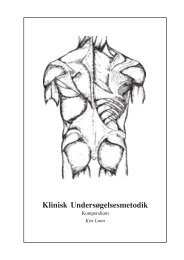PDF File - Asclepius Herbal Consultancy
PDF File - Asclepius Herbal Consultancy
PDF File - Asclepius Herbal Consultancy
Create successful ePaper yourself
Turn your PDF publications into a flip-book with our unique Google optimized e-Paper software.
To the Heart of the Matter<br />
It would appear that the role of CRF, is central to this mechanism in its ability to cause the human<br />
state to resort to basic emotional instinct and physiological responses in states of prolonged stress<br />
and anxiety (Pert1997).<br />
Assuming the basic human condition has no inherent dysfunctional mechanisms in its ability to<br />
adapt to external stimuli, then the causative factor/s relating PNE responses to CV system pathology<br />
must relate to the limitations of the adaptive physiological processes. This suggests that the context<br />
of function is a major factor in CV illness.<br />
Behavioural and physiological responses to emotional stimuli are known to be learned processes,<br />
and it has been proposed that the emotional climate experienced during childhood is a major factor<br />
in conditioning these responses (Goleman 1995). New emotional experiences are matched with<br />
those of previous memories and the physiological responses corresponding to those of the memory<br />
dictate the response to the new experience (Watkins 1997). This comparative activity occurs in the<br />
AN, which in the light of the previously presented mechanisms, suggests that the predisposition for<br />
CRF disturbances in prolonged stress and anxiety states could be established during childhood.<br />
The picture that develops from these considerations relates personality, as a function of emotional<br />
development during childhood, with adaptive ability. This explains how the context, within which<br />
the adaptive ability is exposed to stressors, dictates whether or not the CRF system integrity can be<br />
maintained.<br />
4.1.1.4. Interaction of the autonomic nervous system and Corticotropin Releasing Factor<br />
The mechanisms presented here support an understanding of the interaction of the HPA, the ANS<br />
and the higher cognitive processes in a complex regulatory pathway (see appendix VI: fig. 4.),<br />
which is primarily mediated by the activities of CRF. As can be seen from the previous sections, the<br />
influence of CRF on all levels is to move the psychological and the somatic physiological condition<br />
towards an aroused state.<br />
The activating/inhibiting processes of the LC and the AN are complimentary, as there is relative<br />
diametric interaction with CRF activity, which can be summarised as follows:<br />
In the LC, increased CRF levels potentiate norepinephrine activity exciting the LC, which<br />
results in the activation of the somatic CV stress response activity (presented in section 4.1.1.2.)<br />
In the AN, increased norepinephrine levels potentiate CRF activity, which induces<br />
stress/anxiety behaviour (presented in section 4.1.1.3.)<br />
25


